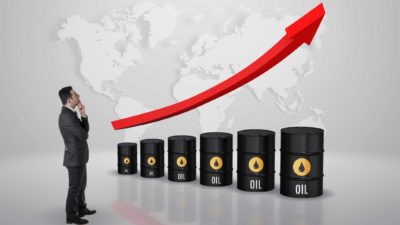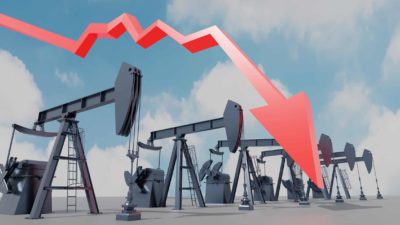The tumbling oil price is giving a potential post-Christmas boost to Aussie motorists. But how about investors in S&P/ASX 200 Index (ASX: XJO) energy shares?
Below we take a look at what's been moving global oil markets, and how ASX 200 energy shares like Woodside Energy Group Ltd (ASX: WDS), Santos Ltd (ASX: STO) and Beach Energy Ltd (ASX: BPT) have been holding up.
How are ASX 200 energy shares faring?
On Christmas day, Brent crude oil was trading for US$81.07 per barrel. Today that same barrel is trading for US$75.89, down 6.4%.
And the Brent crude oil price is down 21.4% since 27 September, when it was trading for US$96.55 per barrel.
As you'd expect this has put some pressure on ASX 200 energy shares, with LNG prices also falling steeply over this period.
Since market close on 28 September the Woodside share price has dropped 14.6%; the Santos share price has lost 5% (partly supported by ongoing merger talks with Woodside); and the Beach Energy share price has fallen only 2.6%.
As for how the ASX 200 energy shares have moved amid the 6.4% fall in the oil price over the limited trading days since Christmas day:
- Beach Energy shares are down 0.3%
- Woodside shares are up 0.8%
- Santos shares are down 0.3%
Judging by ASX 200 investors' muted reaction to the recent slide in global oil prices, I'd say the market believes we're at or close to the bottom of this latest retrace.
Why is the oil price falling?
Despite the recent agreement from OPEC+ to extend and increase the cartel's production cuts through the first quarter of 2024, not to mention the conflict in the Middle East and attacks on ships in the Red Sea, the oil price has been heading lower.
That's largely due to surging supplies from nations outside of OPEC+, most notably the United States. The US now counts as the world's top oil producer and has also recently taken over the mantle as the world's top exporter of LNG.
And while oil demand is forecast to grow in 2024, the oil price has been slipping amid concerns of a potential oversupply.
The latest pressure looks to have come out of the US as well, with traders significantly lowering their bets that the US Federal Reserve will start cutting interest rates in March. If rates remain higher for longer, it could crimp economic growth and dent energy demand.
What can ASX 200 energy investors expect from the oil price now?
Oil price forecasts are notoriously tricky. There are just so many moving parts at play.
But that doesn't keep economists from trying.
According to a Reuters survey of economists and analysts, ASX 200 energy investors can expect Brent crude to average US$82.56 per barrel in 2024. That compares to an average of US$82.17 per barrel in 2023. And it's 8.8% above the current price.
The respondents noted that an escalation in geopolitical conflicts could send the oil price above these forecasts.









